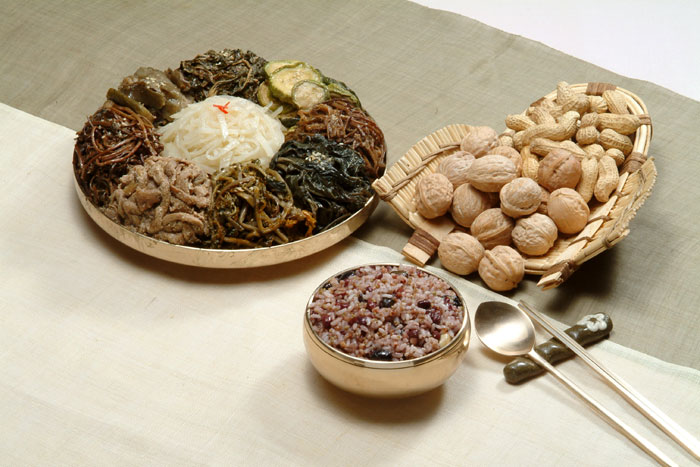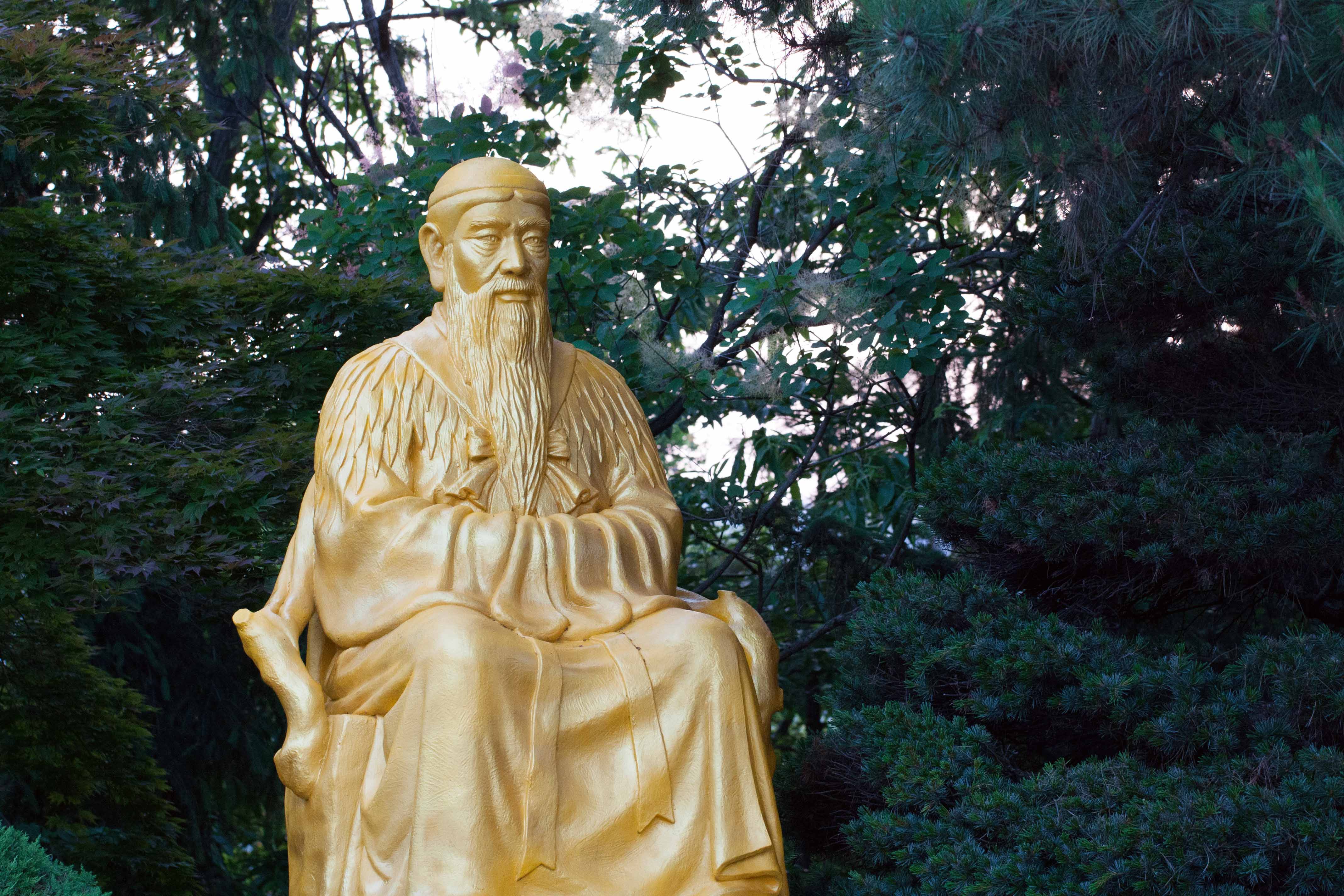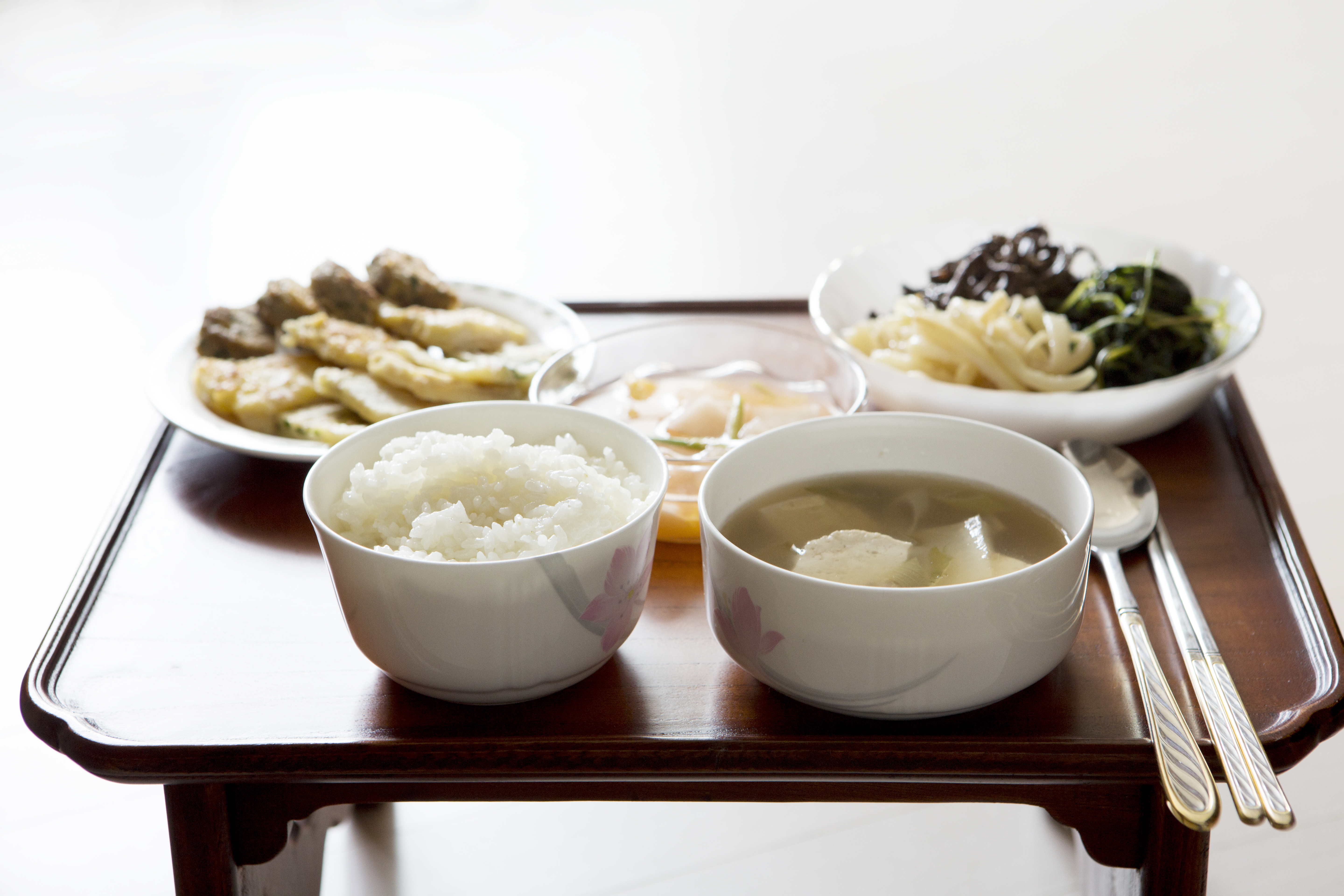|
Yakbap
''Yaksik'' or ''yakbap'' (literally "medicinal food" or "medicinal rice") is a sweet Korean dish made by steaming glutinous rice, and mixing with chestnuts, jujubes, and pine nuts. It is seasoned with honey or brown sugar, sesame oil, soy sauce, and sometimes cinnamon. It is traditionally eaten on Jeongwol Daeboreum (정월대보름), a Korean holiday which falls on every January 15 in the lunar calendar, but also for weddings and hwangap festivities.Yaksik at Britannica Korea Etymology ''Yaksik'' got its name due to the use of honey in its ingredients. According to the etymology book ''A-eon Gakbi'' (hangul:아언각비, hanja:雅言覺非) written in early 19th century |
Daeboreum
Daeboreum (대보름; literally "Great Full Moon") is a Korean holiday that celebrates the first full moon of the new year of the lunar Korean calendar which is the Korean version of the First Full Moon Festival. This holiday is accompanied by many traditions. Origins The record about the origin of Daeboreum is recorded in the book Samgungnyusa, Samguk-yusa (in Korean: 삼국유사), where it says that a crow led the 21st King of Silla, Soji of Silla, Soji to shoot the geomungo (a Korean instrument) case, which was actually where a monk and the royal concubine were committing adultery. After this happening, on the first day of the pig, rat and horse years, people had behaved prudently, and also the 15th of January was called 'Ohgiil' (in Korean: 오기일, in Hanja:烏忌日) and offered sacrifice to heaven this day. Also the origins of Daeboreum can be recognized by some customs listed in books, such as Samguk Sagi, Samguk-sagi (in Korean: 삼국사기) and Silla-bongi (in Kor ... [...More Info...] [...Related Items...] OR: [Wikipedia] [Google] [Baidu] |
Jeongwol Daeboreum
Daeboreum (대보름; literally "Great Full Moon") is a Korean holiday that celebrates the first full moon of the new year of the lunar Korean calendar which is the Korean version of the First Full Moon Festival. This holiday is accompanied by many traditions. Origins The record about the origin of Daeboreum is recorded in the book Samguk-yusa (in Korean: 삼국유사), where it says that a crow led the 21st King of Silla, Soji to shoot the geomungo (a Korean instrument) case, which was actually where a monk and the royal concubine were committing adultery. After this happening, on the first day of the pig, rat and horse years, people had behaved prudently, and also the 15th of January was called 'Ohgiil' (in Korean: 오기일, in Hanja:烏忌日) and offered sacrifice to heaven this day. Also the origins of Daeboreum can be recognized by some customs listed in books, such as Samguk-sagi (in Korean: 삼국사기) and Silla-bongi (in Korean: 신라본기, in Hanja:新羅本� ... [...More Info...] [...Related Items...] OR: [Wikipedia] [Google] [Baidu] |
Korea
Korea ( ko, 한국, or , ) is a peninsular region in East Asia. Since 1945, it has been divided at or near the 38th parallel, with North Korea (Democratic People's Republic of Korea) comprising its northern half and South Korea (Republic of Korea) comprising its southern half. Korea consists of the Korean Peninsula, Jeju Island, and several minor islands near the peninsula. The peninsula is bordered by China to the northwest and Russia to the northeast. It is separated from Japan to the east by the Korea Strait and the Sea of Japan (East Sea). During the first half of the 1st millennium, Korea was divided between three states, Goguryeo, Baekje, and Silla, together known as the Three Kingdoms of Korea. In the second half of the 1st millennium, Silla defeated and conquered Baekje and Goguryeo, leading to the "Unified Silla" period. Meanwhile, Balhae formed in the north, superseding former Goguryeo. Unified Silla eventually collapsed into three separate states due to ... [...More Info...] [...Related Items...] OR: [Wikipedia] [Google] [Baidu] |
Samguk Yusa
''Samguk yusa'' () or ''Memorabilia of the Three Kingdoms'' is a collection of legends, folktales and historical accounts relating to the Three Kingdoms of Korea (Goguryeo, Baekje, and Silla), as well as to other periods and states before, during and after the Three Kingdoms period. "Samguk yusa is a historical record compiled by the Buddhist monk Il Yeon in 1281 (the 7th year of King Chungnyeol of Goryeo) in the late Goryeo Dynasty." It is the earliest extant record of the Dangun legend, which records the founding of Gojoseon as the first Korean nation. The ''Samguk yusa'' is National Treasure No. 306. Samguk yusa is a history book which is composed of five volumes in total and is divided into nine parts within the five volumes. The samguk yusa can be described to the documentation of tales and legends, which are categorised by the two parts such as extraordinary historical events and diverse Buddhist narratives. This book deals with various historical sources such as tales of ... [...More Info...] [...Related Items...] OR: [Wikipedia] [Google] [Baidu] |
Gangneung
Gangneung () is a municipal city in the province of Gangwon-do, on the east coast of South Korea. It has a population of 213,658 (as of 2017).Gangneung City (2003)Population & Households. Retrieved January 14, 2006. Gangneung is the economic centre of the Yeongdong region of Gangwon-do. Gangneung has many tourist attractions, such as Jeongdongjin, a very popular area for watching the sun rise, and Gyeongpo Beach. There is an ROKAF airbase south of downtown Gangneung that formerly doubled as a civil airport. The city hosted all the ice events for the 2018 Winter Olympics. History Gangneung was the home of the Yemaek people in ancient times and became the land of Wiman Joseon in 129 BC. In 128 BC, Nam Ryeo, the army officer of Yaekam, punished Wujang of Wiman Korea and became the territory of the Han dynasty. In the 14th year of Goguryeo Muchheon (313), it entered Goguryeo territory. In 639, Silla occupied this place and ruled it as a 'Sogyeong' (). In 658, King Moo-yeo ... [...More Info...] [...Related Items...] OR: [Wikipedia] [Google] [Baidu] |
Songpyeon
''Songpyeon'' (, 松䭏) is a traditional Korean food made of rice powder. It is a type of ''tteok'', small rice cakes, traditionally eaten during the Korean autumn harvest festival, Chuseok. It is a popular symbol of traditional Korean culture. The earliest records of songpyeon date from the Goryeo period. Description Songpyeons are half-moon shaped rice cakes that typically contain sweet or semi-sweet fillings, such as soybeans, cowpeas, chestnuts, jujubes, dates, red beans, sesame seeds, or honey. They are steamed over a layer of pine needles, which gives them a distinctive taste and the fragrant smell of fresh pine trees. The name songpyeon comes from the use of pine needles—"song" means pine tree, thus, songpyeon translates to “pine cakes.” Culture Songpyeon is quintessential to Korean families' Chuseok celebrations. Traditionally, songpyeon was made by Korean families using freshly harvested rice and then offered to their ancestors on the morning of Chuseok as ... [...More Info...] [...Related Items...] OR: [Wikipedia] [Google] [Baidu] |
Namul
Namul ( ko, 나물) refers to either a variety of edible grass or leaves or seasoned herbal dishes made of them. Wild greens are called ''san-namul'' (, "mountain namul"), and spring vegetables are called ''bom-namul'' (, "spring namul"). On the day of Daeboreum, the first full moon of the year, Koreans eat ''boreum-namul'' (, "full moon namul") with five-grain rice. It is believed that boreum namuls eaten in winter help one to withstand the heat of the summer to come. Preparation and serving For namul as a dish, virtually any type of vegetable, herb, or green can be used, and the ingredient includes roots, leaves, stems, seeds, sprouts, petals, and fruits. Some seaweeds and mushrooms, and even animal products such as beef tendons are also made into namuls. Although in most cases the vegetables (and non-vegetable namul ingredients) are blanched before being seasoned, the method of preparation can also vary; they may be served fresh (raw), boiled, fried, sautéed, fermente ... [...More Info...] [...Related Items...] OR: [Wikipedia] [Google] [Baidu] |
Insomnia
Insomnia, also known as sleeplessness, is a sleep disorder in which people have trouble sleeping. They may have difficulty falling asleep, or staying asleep as long as desired. Insomnia is typically followed by daytime sleepiness, low energy, irritability, and a depressed mood. It may result in an increased risk of motor vehicle collisions, as well as problems focusing and learning. Insomnia can be short term, lasting for days or weeks, or long term, lasting more than a month. The concept of the word insomnia has two possibilities: insomnia disorder and insomnia symptoms, and many abstracts of randomized controlled trials and systematic reviews often underreport on which of these two possibilities the word insomnia refers to. Insomnia can occur independently or as a result of another problem. Conditions that can result in insomnia include psychological stress, chronic pain, heart failure, hyperthyroidism, heartburn, restless leg syndrome, menopause, certain medications, and d ... [...More Info...] [...Related Items...] OR: [Wikipedia] [Google] [Baidu] |
Doosan Encyclopedia
''Doosan Encyclopedia'' is a Korean language encyclopedia published by Doosan Donga (두산동아). The encyclopedia is based on the ''Dong-A Color Encyclopedia'' (동아원색세계대백과사전), which comprises 30 volumes and began to be published in 1982 by Dong-A Publishing (동아출판사). Dong-A Publishing was merged into Doosan Donga, a subsidiary of Doosan Group, in February 1985. The ''Doosan Encyclopedia'' is a major encyclopedia in South Korea. Digital edition EnCyber The online version of the ''Doosan Encyclopedia'' was named EnCyber, which is a blend of two English words: ''Encyclopedia'' and ''Cyber''. The company has stated that, with the trademark, it aims to become a center of living knowledge. EnCyber provides free content to readers via South Korean portals such as Naver. Naver has risen to the top position in the search engine market of South Korea partially because of the popularity of EnCyber encyclopedia. When Naver exclusively contracted Doosan Do ... [...More Info...] [...Related Items...] OR: [Wikipedia] [Google] [Baidu] |
Beijing
} Beijing ( ; ; ), alternatively romanized as Peking ( ), is the capital of the People's Republic of China. It is the center of power and development of the country. Beijing is the world's most populous national capital city, with over 21 million residents. It has an administrative area of , the third in the country after Guangzhou and Shanghai. It is located in Northern China, and is governed as a municipality under the direct administration of the State Council with 16 urban, suburban, and rural districts.Figures based on 2006 statistics published in 2007 National Statistical Yearbook of China and available online at archive. Retrieved 21 April 2009. Beijing is mostly surrounded by Hebei Province with the exception of neighboring Tianjin to the southeast; together, the three divisions form the Jingjinji megalopolis and the national capital region of China. Beijing is a global city and one of the world's leading centres for culture, diplomacy, politics, finance, busi ... [...More Info...] [...Related Items...] OR: [Wikipedia] [Google] [Baidu] |
Donggukyeojiseungram
Donggukyeojiseungram or ShinjeungDonggukyeojiseungram is a Korean geography book that was published by the Joseon dynasty in 1530. The only printed version of the book is currently located in Kyoto University, however the original wooden print is in Kyujanggak The Kyujanggak, also known as Gyujanggak, was the royal library of the Joseon Dynasty. It was founded in 1776 by order of King Jeongjo of Joseon, at which time it was located on the grounds of Changdeokgung Palace. Today known as Kyujanggak Royal .... History The project was originally created in 1481 based on Chinese sources. In 1530, it added five more books and made the series as an expanded edition thus the word shinjeung (新增) was added to indicate the expansion of content, with the total of 55 books. The book was more of a guidebook for a separate map rather than actual cartography. Each book started with the drawing of the overall view of the regions covered, and wrote about the history, customs, temples, mausol ... [...More Info...] [...Related Items...] OR: [Wikipedia] [Google] [Baidu] |
Dongguksesigi
Dongguksesigi (동국세시기,東國歲時記) is a book explaining the traditional customs of the year in Korea, written during the Joseon Dynasty Joseon (; ; Middle Korean: 됴ᇢ〯션〮 Dyǒw syéon or 됴ᇢ〯션〯 Dyǒw syěon), officially the Great Joseon (; ), was the last dynastic kingdom of Korea, lasting just over 500 years. It was founded by Yi Seong-gye in July 1392 and re ... by the scholar Hong Suk Mo. The book, finished in 1849, explains the origin of each custom in detail. References 1849 books Joseon dynasty works {{korea-hist-stub ... [...More Info...] [...Related Items...] OR: [Wikipedia] [Google] [Baidu] |





